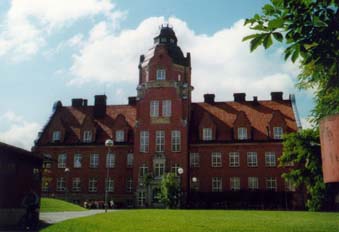ALARM - WARN - ALARM - EXTINGUISH
• save yourself and others around you, but don't take too many risks yourself
• warn others who may be in danger
• alert the Emergency Services by calling 112
• put out the fire if possible
Fires that cannot be extinguished with deployed hand fire extinguishers must be alerted via telephone 112. Limit the source of the fire by closing windows and doors.
Fire cells
The building is divided into a number of fire cells to prevent fire and smoke from spreading.
Each fire cell is delimited by fire-rated walls and doors. In principle, all floors, stairwells, lifts, operating areas and waste rooms have their own fire cells. Doors in fire compartment boundaries can be magnetically suspended in the open position for transport and closed manually with a push button marked "fire door closer". When an evacuation alarm is triggered, the doors close automatically within the alarmed area.
Doors in fire cell boundaries must absolutely not be blocked by wedges or the like!
Escape routes / Assembly point
See evacuation plans in corridors.
The stairwells form independent escape routes. Two emergency exits can be reached from each workplace. The escape routes, which are marked with green, luminous escape signs, must never be blocked. The green signs are always lit and have a battery backup to illuminate even in the event of a power cut.
If the fire alarm is triggered, all personnel must leave the building, close all doors behind them and gather at the assembly point (See the respective evacuation plan). The staff reports there to the evacuation recipient and leaves their name and group affiliation or equivalent. No one may depart from the assembly point until this is done.
